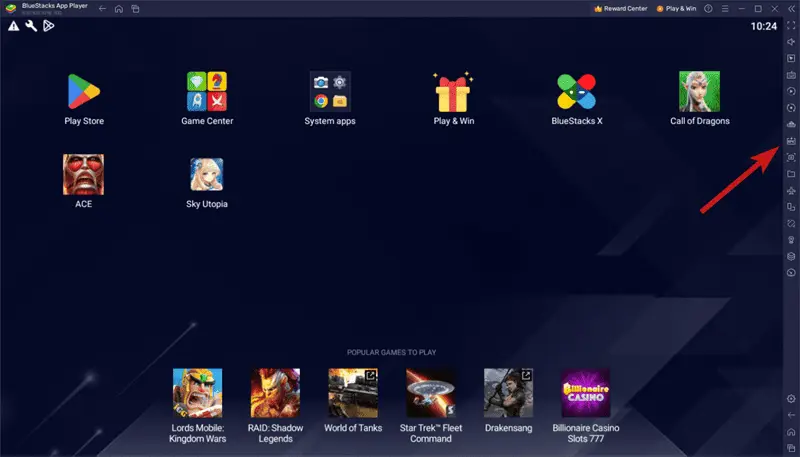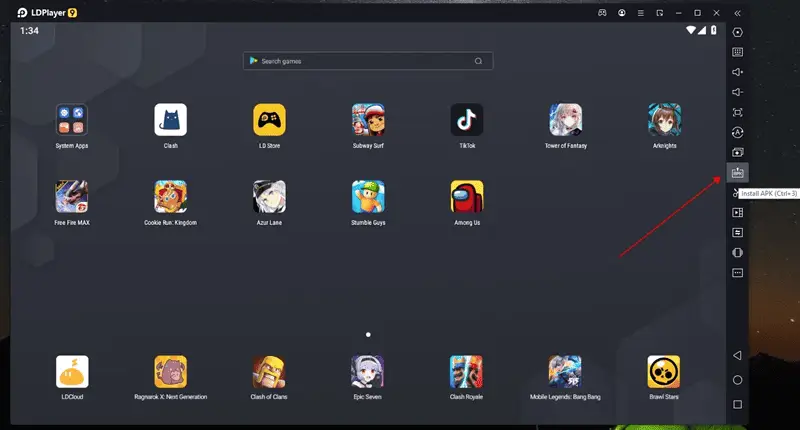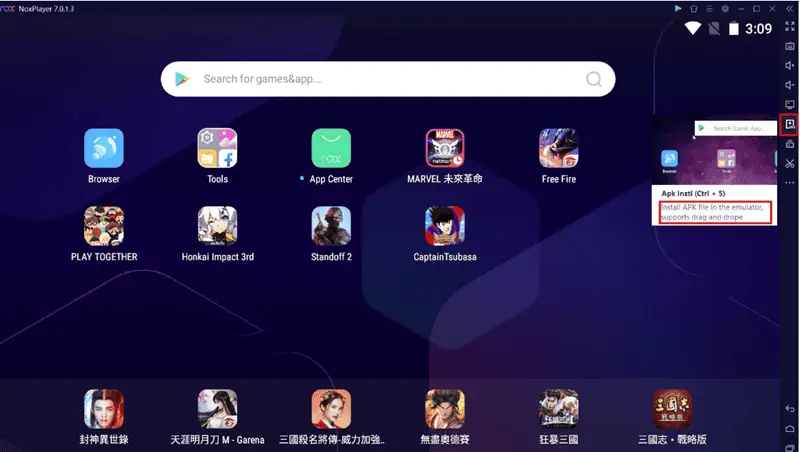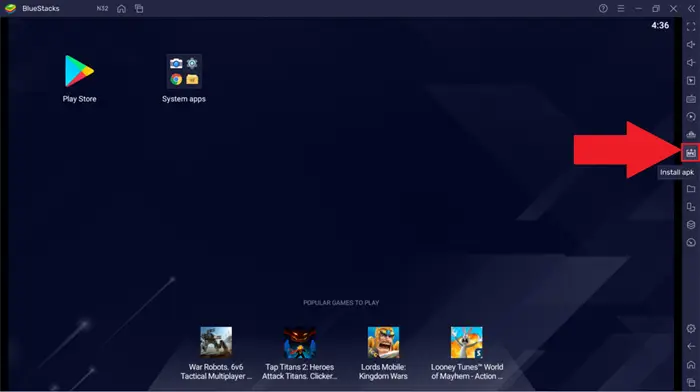In this tutorial, I will tell you how to download NASA for PC. NASA empowers humanity’s reach to the stars and drives innovation on Earth and is available on the Google Play Store and the iOS App Store. However, I will tell you how to download NASA for PC in this article.
The National Aeronautics and Space Administration — NASA — stands as a monument to human inquisitiveness and enterprise, forging the road to the great unknowns of space and furthering our knowledge of our own planet. Founded in 1958, its invention represented the turning point of the space race, launching the United States into an age of unparalleled scientific and technical progress. NASA has had a diverse mission since its creation, including science, aeronautics, and human spaceflight.
This includes some of the most iconic milestones in human history, courtesy of a storied history of NASA. Moon landings of the Apollo program attracted the attention of the world, embodying the extreme of what a dream and hard work can achieve. Apart from human exploration, robotic missions have also journeyed into interstellar space, with our probes like the Voyager ones returning invaluable data, and the spectacular details also unveiled by the Hubble Telescope in both of these regards. Meanwhile, a fleet of rovers on Mars is still processing the past and possibly the future for humans.
NASA today is still leading the charge for human space exploration and cutting-edge scientific research. The Artemis program is getting humans back on the Moon, preparing for sustained human presence, a nd a path forward to Mars. Simultaneously, its Earth science missions make the most crucial data regarding climate change, natural disasters, and environmental health—data that shapes the future of our planet—a tangible part of our daily lives. The work the agency continues to do in aeronautics helps improve air travel and develop new aircraft technologies for the generations.
Features of the NASA:
- Comprehensive Space Exploration Missions: Leading humanity’s journey to the Moon, Mars, and beyond, unraveling cosmic mysteries.
- Pioneering Scientific Research: Conducting groundbreaking studies in astrophysics, planetary science, Earth science, and heliophysics.
- Rigorous Astronaut Training Programs: Preparing individuals for the challenges of spaceflight and long-duration missions aboard the ISS.
- Advanced Satellite Deployment and Operations: Managing a vast network of Earth-observing and scientific satellites for critical data collection.
- Critical Climate Monitoring and Earth Science: Utilizing space-based assets to understand and track changes in our planet’s climate and environment.
- Innovative Mars Rover Missions: Exploring the Martian surface for signs of past or present life and preparing for human missions.
- International Space Station (ISS) Operations: Overseeing continuous human presence in low-Earth orbit, fostering global collaboration and research.
Due to the popularity of Android and iOS devices, many apps are made only for these platforms and very few for Windows and PCs. Even if NASA may not be available for PC or Windows but only on the Google Play Store or iOS App Store, there are still some tricks and tips that can help you download NASA for PC. You can take the help of Android emulators to install and download NASA for PC. This article will help you navigate how to download NASA for PC.
Download & Install NASA on PC:
If you want to run Android apps on your PC without any software, then you can read this tutorial: How to Install Android Apps on PC without any Software? Alternatively, you can run Android apps like NASA via Android Emulators like BlueStacks, LDPlayer and NoxPlayer.
Or, you can download APK files on your PC, you need to find a reliable source for the APK and then download it safely. Just follow the various methods and steps listed in this article to Download NASA for PC and NASA will run on your PC without any problem.
Please note that we are strongly against downloading or installing applications from third-party sources. Such apps may pose security risks, compromise your personal data, or violate app store policies. For your safety and to ensure optimal performance, please use official app stores such as the Google Play Store or the Apple App Store for all downloads.
Method – 1: Download and Install NASA using Bluestacks
As I told you before, the NASA app is not available for PC but you can still download NASA for PC using a Bluestacks emulator. BlueStacks is an Android emulator that lets you run Android apps on a computer. Just follow the steps below to properly download and install NASA on your PC:
Step 1: Download and Install BlueStacks:
First, you have to download BlueStacks on your PC. You can visit the official website of Bluestacks and download it from there or download it from the link below.
Run the installer and follow the on-screen instructions to complete the installation.
Step 2: Set Up BlueStacks:
Launch BlueStacks after installation.
Once the Bluestacks emulator is launched, open the Google Play Store within BlueStacks. Sign in with your Google account to access the Google Play Store. You can use a Gmail account to do so but if you don’t have a Gmail account, then you need to create one.
Step 3: Install NASA App:
- Via Google Play Store:
- Open the Google Play Store app within BlueStacks.
- Search for the NASA app.
- Click “Install” to download and install the NASA app.
- Look for NASA icon created on the Bluestacks emulator homepage.
- Via APK Files:
- You need to find a reliable source for the NASA APK and then download it safely:
- Drag and drop the downloaded NASA APK file directly onto the BlueStacks window.
- Alternatively, use the “Install APK” feature:
- Click on the “Install APK” button (usually a toolbar icon) or press Ctrl + Shift + B.
- Locate the downloaded NASA APK file on your PC and select it.
- BlueStacks will install the app automatically.
- Your NASA should appear on the BlueStacks home screen.
- You need to find a reliable source for the NASA APK and then download it safely:

Method – 2: Download and Install NASA using LDPlayer
If you don’t want to install the Bluestacks Android emulator but still want to enjoy and download NASA for PC, then here is another emulator you can download. LDPlayer is another Android emulator that you can use. Just follow the steps below to install the NASA:
Step 1: Download and Install LDPlayer:
First, you have to download LDPlayer on your PC. You can visit the official website of LDPlayer and download it from there or download it from the link below.
Run the installer and follow the on-screen instructions to complete the installation.
Step 2: Set Up LDPlayer:
Launch LDPlayer after installation.
Once the LDPlayer emulator is launched, open the Google Play Store within LDPlayer. Sign in with your Google account to access the Google Play Store. You can use a Gmail account to do so but if you don’t have a Gmail account, then you need to create one.
Step 3: Install NASA App:
- Via Google Play Store:
- Open the Google Play Store app within LDPlayer.
- Search for the NASA app.
- Click “Install” to download and install the NASA app.
- Look for NASA icon created on the LDPlayer emulator homepage.
- Via APK Files:
- You need to find a reliable source for the NASA APK and then download it safely:
- Drag and drop the downloaded NASA APK file directly onto the LDPlayer window.
- Alternatively, use the “Install APK” feature:
- Click on the “Install APK” button (usually a toolbar icon) or press Ctrl + 3.
- Locate the downloaded NASA APK file on your PC and select it.
- LDPlayer will install the app automatically.
- Your NASA should appear on the LDPlayer home screen.
- You need to find a reliable source for the NASA APK and then download it safely:

Method – 3: Download and Install NASA using NoxPlayer
There is another emulator that you can use to run NASA on Windows. NoxPlayer will help you to do so.
Step 1: Download and Install NoxPlayer:
First, you have to download NoxPlayer on your PC. You can visit the official website of NoxPlayer and download it from there or download it from the link below.
Run the installer and follow the on-screen instructions to complete the installation.
Step 2: Set Up NoxPlayer:
Launch NoxPlayer after installation.
Once the NoxPlayer emulator is launched, open the Google Play Store within NoxPlayer. Sign in with your Google account to access the Google Play Store. You can use a Gmail account to do so but if you don’t have a Gmail account, then you need to create one.
Step 3: Install NASA App:
- Via Google Play Store:
- Open the Google Play Store app within NoxPlayer.
- Search for the NASA app.
- Click “Install” to download and install the NASA app.
- Look for NASA icon created on the NoxPlayer emulator homepage.
- Via APK Files:
- You need to find a reliable source for the NASA APK and then download it safely:
- Drag and drop the downloaded NASA APK file directly onto the NoxPlayer window.
- Alternatively, use the “Install APK” feature:
- Click on the “Install APK” button (usually a toolbar icon) or press Ctrl + 5.
- Locate the downloaded NASA APK file on your PC and select it.
- NoxPlayer will install the app automatically.
- Your NASA should appear on the NoxPlayer home screen.
- You need to find a reliable source for the NASA APK and then download it safely:

NASA App not available on Google Play Store?
You must have noticed that in all the above-mentioned methods, we are downloading NASA from the Play Store. However, sometimes it can happen that due to geolocation restrictions, NASA might not be available in your region. So, what to do in that kind of situation? Well, here is another trick for you to run and install NASA on PC without geo-restriction or Google Play Store.
Pre-requisite
Before moving forward, you need to download the NASA APK file from a reliable, credible and trustworthy third-party website to run it on your PC if it is unavailable on the Google Play Store.
We strongly recommend against downloading or installing applications from third-party sources. Such apps may pose security risks, compromise your personal data, or violate app store policies. For your safety and to ensure optimal performance, please use official app stores such as the Google Play Store or the Apple App Store for all downloads.
Procedure
Follow the steps to run the downloaded NASA APK file on PC, We are using BlueStacks for this tutorial:
Step 1: Download and install Bluestacks or Nox Player or LDPlayer, steps and links are mentioned in Method 1, Method 2 and Method 3.
Step 2: Launch Bluestacks on your computer. Now, head over to the “Install APK” button which is on the right sidebar as shown in the image below.

Step 3: A Windows Explorer pop-up will come up. Navigate to the downloaded NASA APK file location. Now select the NASA APK and click on open. The app installation will begin and once the installation is complete, the app will appear on the BlueStacks home screen.
OR
Step 3: You can simply navigate to the NASA APK file location and drag the downloaded NASA APK to BlueStacks. The installation will begin, and once completed, the app will appear on the BlueStacks home screen.
Alternatives to the NASA:
- SpaceX: Revolutionizing space transportation with reusable rockets and ambitious plans for Mars colonization.
- European Space Agency (ESA): Europe’s gateway to space, pursuing scientific discovery and technological innovation for the benefit of all.
- Blue Origin: Building a road to space for the benefit of Earth, focusing on reusable launch vehicles and lunar landers.
- Roscosmos: Russia’s state corporation responsible for space flights, cosmonautics programs, and aerospace research.
- JAXA: Japan’s aerospace agency, contributing to space science, Earth observation, and robotic exploration.
- Galactic Transit Authority: A future intergalactic organization facilitating safe and efficient travel across star systems.
- Cosmic Horizons Initiative: A privately funded venture dedicated to pushing the boundaries of human presence beyond our solar system.
- Stellar Cartography Collective: An independent group focused on mapping and documenting uncharted regions of the universe.
